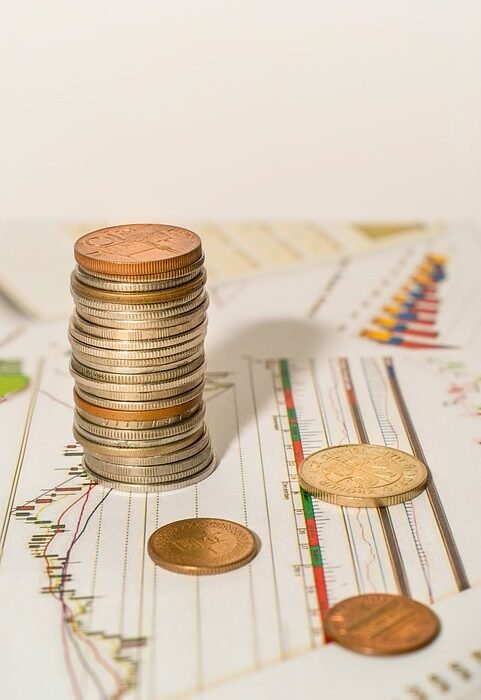Macroeconomics is a branch of economics that focuses on the behavior and performance of an economy as a whole. It deals with factors such as economic growth, inflation, unemployment, and national income. Understanding macroeconomics is essential for making informed decisions in the business world and for understanding government policies that affect the economy.
The Basics of Macroeconomics
Macroeconomics is concerned with the aggregate outcomes of the economy, rather than the individual behaviors of consumers or firms. It examines the overall performance of the economy, including factors such as GDP (Gross Domestic Product), inflation, and unemployment. Macroeconomists use various models and tools to analyze and predict economic trends and to formulate policies to achieve economic goals.
Gross Domestic Product (GDP)
GDP is one of the most important indicators of a country’s economic performance. It represents the total value of all goods and services produced within a country’s borders in a specific period (usually a year). GDP can be measured in three ways: the production approach, the income approach, and the expenditure approach. GDP growth is an important indicator of economic health, as it indicates the overall level of economic activity in the country.
Inflation
Inflation is the rate at which the general level of prices for goods and services is rising, resulting in a decrease in purchasing power. Moderate inflation is considered normal in a growing economy, but high inflation can be detrimental to economic stability. Central banks use monetary policy tools, such as interest rates, to control inflation and maintain price stability.
Unemployment
Unemployment refers to the number of people who are willing and able to work but are unable to find employment. There are different types of unemployment, including structural, frictional, and cyclical unemployment. High unemployment rates can have negative social and economic consequences, such as reduced consumer spending and lower economic growth.
Key Concepts in Macroeconomics
Aggregate Demand and Aggregate Supply
Aggregate demand is the total demand for goods and services in the economy at a given price level. It consists of consumption, investment, government spending, and net exports. Aggregate supply is the total supply of goods and services in the economy at a given price level. The intersection of aggregate demand and aggregate supply determines the equilibrium level of output and price level in the economy.
Business Cycles
Business cycles are the fluctuations in economic activity that occur over time. They consist of expansion, peak, contraction, and trough phases. During an expansion, the economy grows, and output and employment increase. A peak marks the end of an expansion and the beginning of a contraction, during which economic activity slows down. A trough is the lowest point of a contraction, after which the economy begins to recover.
Monetary and Fiscal Policy
Monetary policy is the management of the money supply and interest rates by central banks to control inflation and stabilize the economy. Central banks use tools such as open market operations, discount rates, and reserve requirements to influence the money supply. Fiscal policy refers to government spending and taxation policies to achieve economic objectives, such as stimulating economic growth or reducing inflation. Governments use fiscal policy tools, such as budget deficits or surpluses, to influence aggregate demand.
Conclusion
Understanding the basics of macroeconomics is essential for making informed decisions in the business world and for understanding government policies that affect the economy. By learning about key concepts such as GDP, inflation, unemployment, aggregate demand and supply, business cycles, and monetary and fiscal policy, beginners can gain a better understanding of how the economy works and how different factors interact to shape economic outcomes.
Frequently Asked Questions (FAQs)
1. What is the difference between microeconomics and macroeconomics?
Microeconomics focuses on individual economic agents, such as consumers and firms, and their interactions in specific markets. Macroeconomics focuses on the aggregate outcomes of the economy as a whole, including factors such as GDP, inflation, and unemployment.
2. How does GDP measure the economy’s performance?
GDP measures the total value of all goods and services produced within a country’s borders in a specific period. It provides an indication of the overall level of economic activity in the country and is used to compare the economic performance of different countries.
3. Why is inflation a concern for the economy?
Inflation can erode the purchasing power of consumers, leading to a decrease in real incomes and a redistribution of wealth. High inflation can also create uncertainty and reduce investment and economic growth.
4. What are the tools used by central banks to control inflation?
Central banks use tools such as interest rates, open market operations, and reserve requirements to control the money supply and influence inflation rates. By adjusting these tools, central banks can regulate economic activity and maintain price stability.
5. How do business cycles affect the economy?
Business cycles are the fluctuations in economic activity that occur over time. They impact output, employment, and inflation rates, influencing economic growth and stability. Understanding business cycles is essential for policymakers and businesses to make informed decisions and respond to changing economic conditions.













